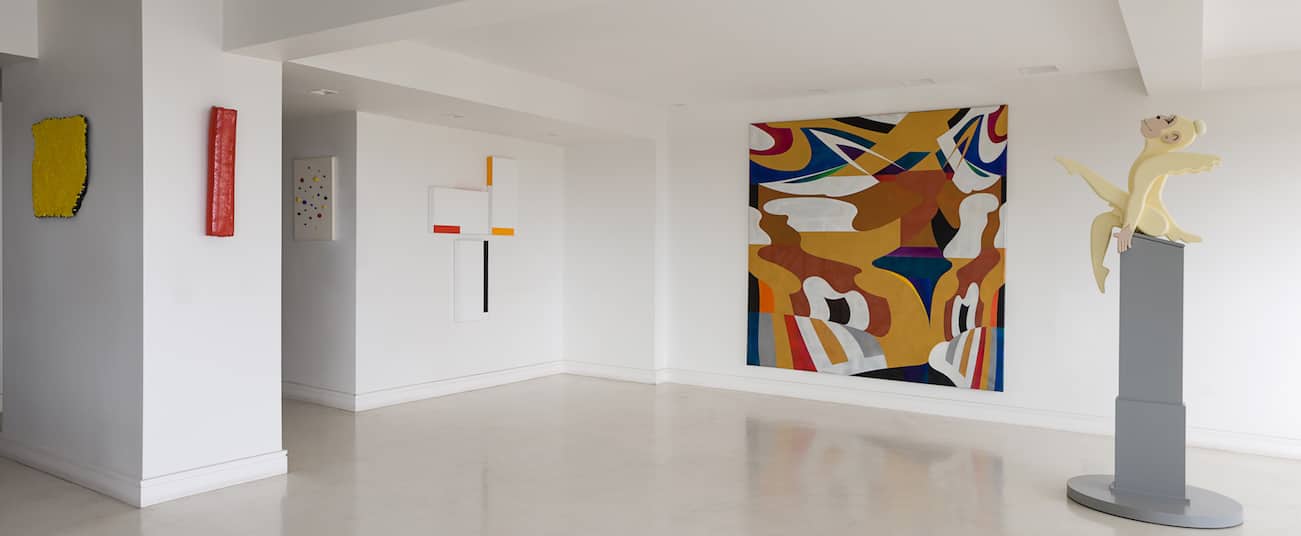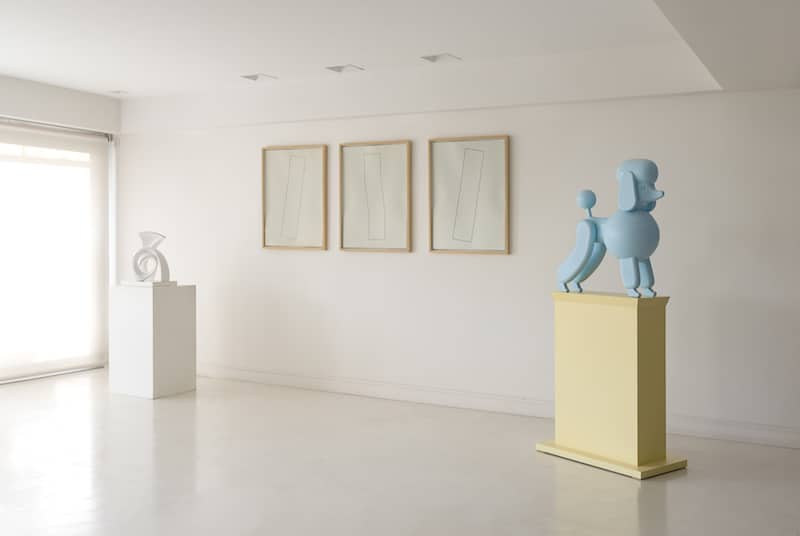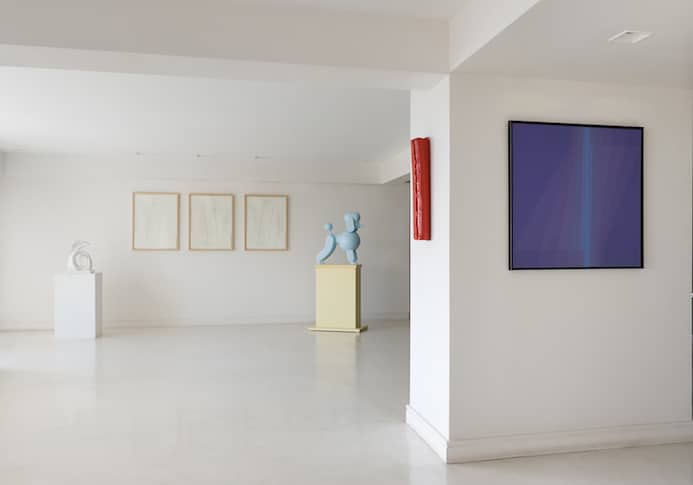POP, abstraction & minimalism
July - September 2021
MCMC Gallery is pleased to present “Pop, Abstraction and Minimalism”, a group exhibition featuring works by various Argentine artists: Miguel Ángel Vidal, Ary Brizzi, César Paternosto, Antonio Asís, Rogelio Polesello, Eduardo Costa, Edgardo Giménez, María Boneo and Azul Caverna.
The exhibition aims to connect and explore different artistic languages, such as Pop Art, Geometric Abstraction, Minimalism and Conceptualism, spanning from the 1960s to the present day.
The body of work on display weaves an agonistic and contrasting discourse, where colours and forms attract and repel one another. In this way, Edgardo Giménez’s Pop animals coexist with the rhythmic minimalism of César Paternosto, and alongside the colourful play of Polesello’s geometric abstractions.
“Pop, Abstraction and Minimalism” brings together and juxtaposes the discourse of Argentine artists representing key artistic movements of the 1960s and 70s, as well as those of our current era.
Miguel Ángel Vidal (1928–2009) was an Argentine painter, draughtsman and graphic designer. He began by exploring naturalism and studying the expressive potential of the line. Over time, his expressive needs led him towards Abstraction and Geometry. In 1959, he co-founded the Buenos Aires Generative Art Movement with Eduardo Mac Entyre.
Ary Brizzi (1930–2014) was born in Buenos Aires, Argentina. He developed a career as a painter, sculptor and designer, becoming a key figure in geometric abstraction in Argentina. In his work, Brizzi upheld the concepts of “visual reality” and “plastic reality”. He spoke not of geometry or abstraction, but of “concrete forms”, in line with how the Bauhaus constructivists would have described them.
César Paternosto (1931) was born in La Plata, Argentina. A prominent figure in geometric abstraction, Paternosto began in 1969 a series of works where, at first glance, the front of the piece—white and uniform—revealed no image. He began painting on the wide sides of the stretcher bars. His colour planes appear and disappear as the viewer moves around the work.
Antonio Asís (1932–2019) was an Argentine artist and a key exponent of Op Art. In the 1940s, he explored abstraction and non-representational art. The publication of the magazine Arturo in 1944 and the creation of the Asociación Arte Concreto-Invención marked important steps in his career. In 1956, he moved to Paris, where he began a series of works exploring how light phenomena could be mediated through photography. His work is known for its study of colour vibrations and the many possibilities of monochromatic composition.
Rogelio Polesello (1939–2014) was born in Buenos Aires, Argentina. A painter and sculptor, he held his first solo exhibition in 1959 at Galería Peuser, where his admiration for Victor Vasarely was evident. Shortly after, his geometric style began to incorporate elements from New Abstraction and optical art, such as the displacement of geometric shapes, creating powerful effects of visual instability. He worked with painting, printmaking, and acrylic objects capable of producing optical effects that fragmented the image.
Eduardo Costa (born 1940, Buenos Aires) is an Argentine artist who lived in the United States for twenty-five years and in Brazil for four. He began his career in Buenos Aires as part of the Instituto Torcuato Di Tella generation, continuing his work in New York, where he made a strong contribution to the local avant-garde. He has collaborated with American artists such as Vito Acconci, Scott Burton, John Perreault, and Hannah Weiner, among others. In Brazil, he participated in projects organised by Hélio Oiticica, Lygia Pape, Antonio Manuel, Lygia Clark, and other members of the Rio de Janeiro school.
Edgardo Giménez (born 1942) was born in Santa Fe, Argentina. A self-taught artist, he began his career in advertising graphics. He is one of the foremost representatives of Pop Art in Argentina. He was part of the legendary Instituto Di Tella during the 1960s and 70s. His works celebrate colour and joy.
María Boneo (born 1959) is an Argentine sculptor based in Buenos Aires. Her earlier work was figurative, though it has since evolved towards abstraction. Nonetheless, traces of the female body’s memory can still be discerned in the meticulous process of refining forms that defines her sculptures. Boneo has worked with a variety of materials, from early wood carving to marble, and now bronze.
Azul Caverna (born 1979) explores the traditions and movements of geometric art to investigate the ascetic use of form and colour. Through an intuitive process, she seeks to understand the role of a contemporary geometric language and the influence of individual contemporary avant-gardes in a discipline historically shaped by collective movements.
Curatorial Text by Carolina Orlando





